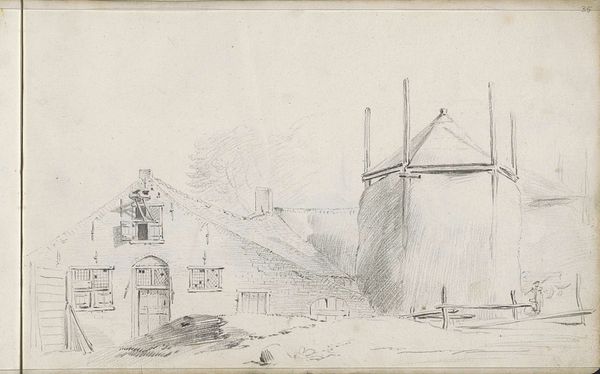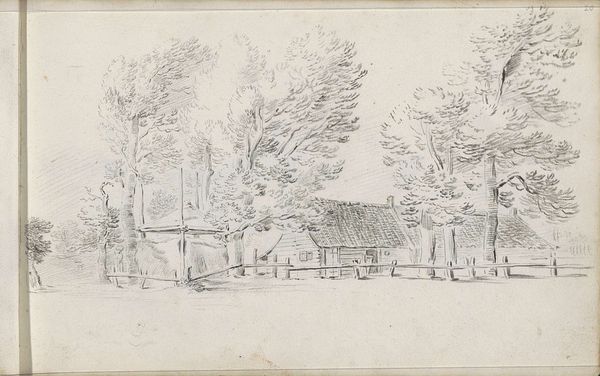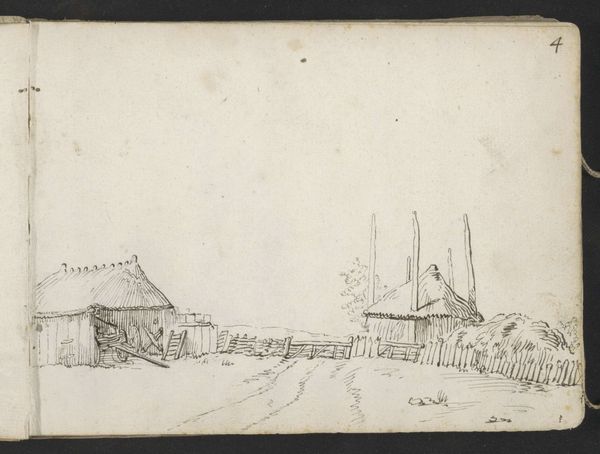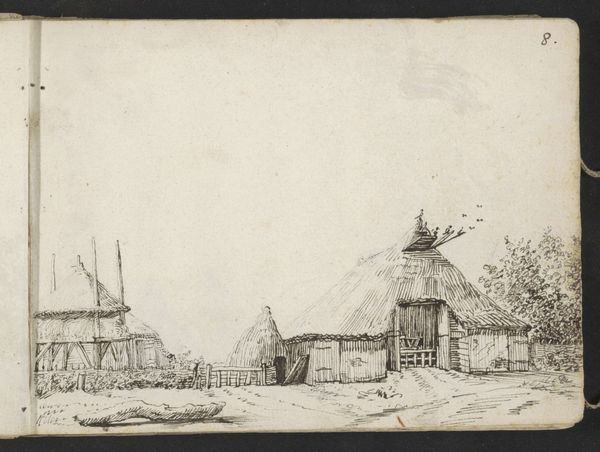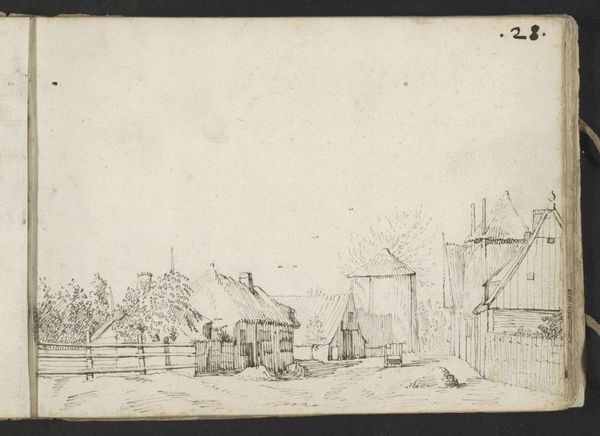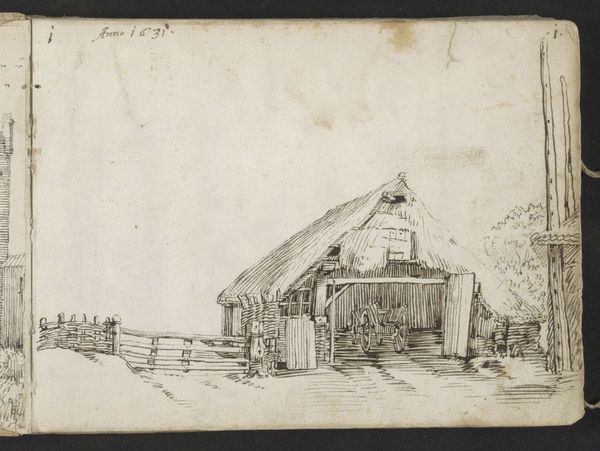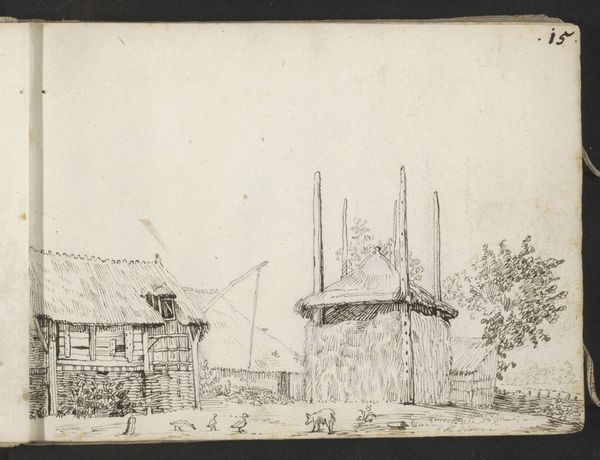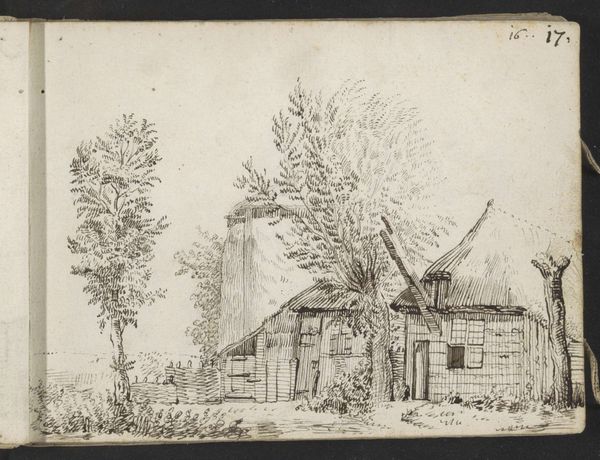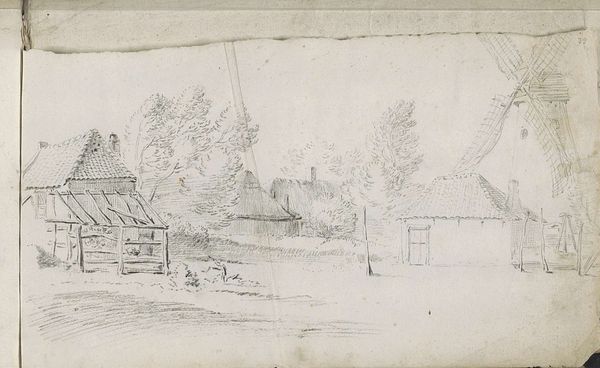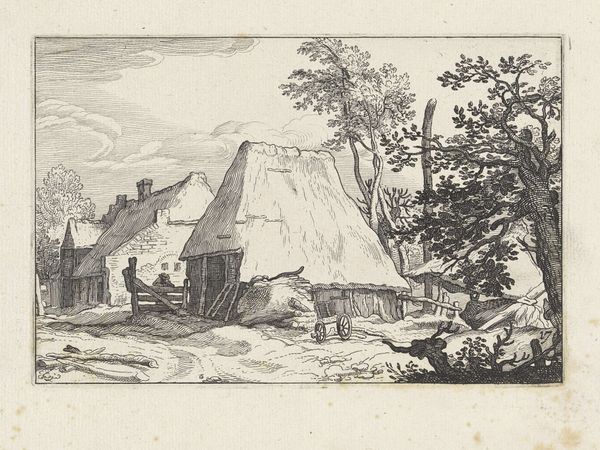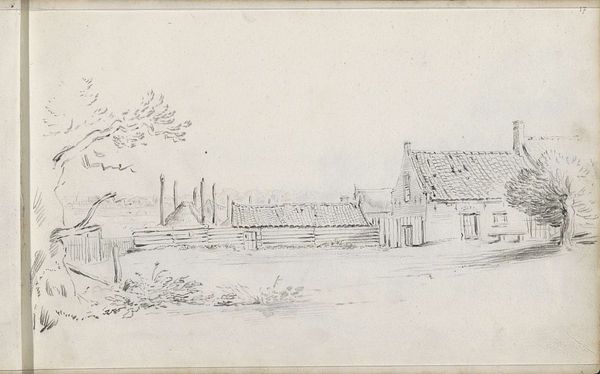
drawing, paper, pencil
#
drawing
#
dutch-golden-age
#
landscape
#
paper
#
form
#
pencil
#
line
#
realism
Copyright: Rijks Museum: Open Domain
Editor: So, this drawing is titled "Farm with Haystack" by Pieter Moninckx, created around 1645-1646 using pencil on paper. It feels very immediate and raw to me; like a sketch done on location. What can you tell me about the socio-political influences that might have shaped this image? Curator: It's certainly a charming sketch. The Dutch Golden Age saw an explosion of landscape art as the newly independent Dutch Republic sought to define its identity. Rural scenes, like this farm, became powerful symbols of national pride and prosperity. These weren't just pretty pictures, but assertions of Dutch ownership and control over their land following independence from Spain. Editor: That’s fascinating! I hadn’t considered the political aspect of landscape art so directly. Does the act of depicting this specific type of farm play a part in shaping the political image of the country? Curator: Absolutely. Consider who was commissioning and consuming these images. Primarily, the rising merchant class in the cities, the economic beneficiaries of a newfound nation who could now afford art. Images of thriving farms and rural life presented an idealised, perhaps even propagandistic, view of a nation at peace with itself and flourishing economically, which was important for cementing this new Dutch identity and maintaining social cohesion. What do you think, looking at the subject in its setting? Editor: The lack of idealisation strikes me. It looks more like a working farm, really quite plain. A record, maybe? Curator: Precisely. Even that seemingly straightforward ‘record’ participates in the cultural landscape. By documenting an ordinary farm, it validates the importance of everyday Dutch life. But also consider the role of institutions and the art market: Drawings like these, though seemingly informal, also functioned within a developing art market. Think of them as potentially studies for larger works, ways for artists to demonstrate skill, and commodities themselves within an emerging commercial art world. Editor: That makes a lot of sense. I didn't think about the influence of an emerging art market pushing certain pieces into circulation. I guess seeing these seemingly simple landscape drawings also meant people from the time bought into the idea of promoting what the Dutch saw as idyllic local environments. Thank you for sharing this information with me, this has provided me with a more concrete understanding of that time period! Curator: You’re welcome! Thinking about the function of art beyond the purely aesthetic enriches our understanding and appreciation, doesn't it?
Comments
No comments
Be the first to comment and join the conversation on the ultimate creative platform.

